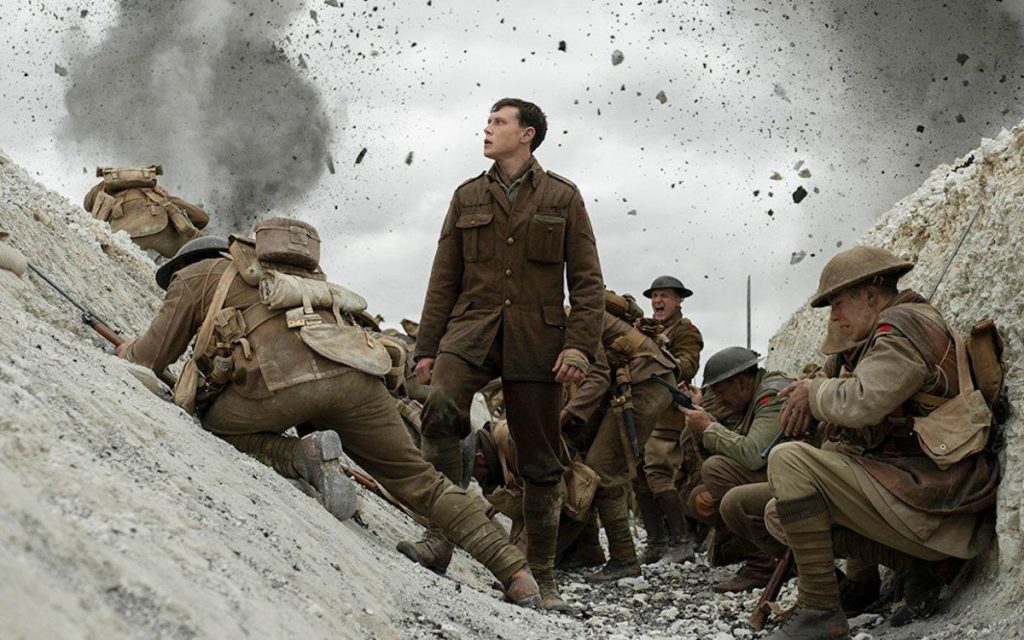In the realm of modern cinema, few films have captivated audiences and critics alike with the same intensity as “No Country for Old Men.” Directed by Joel and Ethan Coen, this adaptation of Cormac McCarthy‘s novel is a masterclass in building tension and exploring the depths of human morality. Set against the stark, unforgiving backdrop of the Texas desert, the film weaves a narrative that is as gripping as it is thought-provoking. Through its meticulous pacing, haunting performances, and a relentless examination of fate and consequence, “No Country for Old Men” challenges viewers to confront the darker aspects of human nature. This article delves into the intricate mechanisms that make the film a study in tension and morality, dissecting the elements that contribute to its enduring impact and critical acclaim.
Exploring the Cinematic Techniques that Build Unyielding Tension
The Coen Brothers‘ adaptation of Cormac McCarthy’s “No Country for Old Men” serves as a masterclass in the art of crafting tension through cinematic techniques. This tension is not just an atmospheric backdrop but a visceral experience that threads through every frame. The directors employ a series of deliberate choices to create an unsettling environment that leaves audiences on edge. Silence becomes a formidable tool in their arsenal, amplifying the impact of each sound, from the creak of a door to the ominous click of Anton Chigurh’s captive bolt pistol. By stripping away musical scores in critical scenes, the Coens invite viewers to hang on every breath and footstep, building an unyielding suspense that feels almost suffocating.
Visual composition also plays a pivotal role. Through carefully constructed shot sequences, the film maintains a relentless pace that mirrors the characters’ inexorable march towards their fates. Close-ups of Chigurh’s inscrutable face juxtaposed with wide, desolate landscapes accentuate his inhumanity against the backdrop of a stark, indifferent world. The use of long takes allows tension to simmer and bubble, giving the audience no respite as they become unwitting participants in the unfolding drama. These techniques collectively create a pervasive sense of unease, underscoring the film’s exploration of morality and the chaotic forces that govern life and death.

Analyzing Moral Ambiguity and Its Impact on Audience Perception
The Coen Brothers’ masterpiece, No Country for Old Men, masterfully blurs the lines between right and wrong, challenging viewers to grapple with the film’s moral complexities. Moral ambiguity is not merely a narrative device here; it’s a thematic cornerstone that shapes audience perception. As the story unfolds, characters like Anton Chigurh and Llewelyn Moss are not easily classified as simply ‘good’ or ‘evil.’ Instead, they embody a spectrum of ethical shades that provoke introspection and debate among viewers.
- Character Complexity: The film’s characters operate in a morally grey area, leaving audiences to question their own definitions of justice and morality.
- Unpredictable Outcomes: The unpredictable nature of the plot, driven by morally ambiguous decisions, keeps viewers on edge, fostering a deep engagement with the narrative.
- Philosophical Undertones: By presenting situations where traditional moral codes are challenged, the film encourages viewers to confront existential questions about fate, choice, and the human condition.
Through its nuanced portrayal of morality, No Country for Old Men not only captivates but also compels its audience to re-evaluate their own moral compasses, making it a profound study in tension and ethical reflection.

Character Development as a Catalyst for Ethical Dilemmas
In “No Country for Old Men,” character development serves as the engine driving ethical quandaries, shaping the film’s tense narrative. Anton Chigurh, with his rigid moral code, embodies a chilling, unwavering force. His actions compel the audience to confront the uncomfortable truth about fate and justice, making us question the thin line between righteousness and villainy. Chigurh’s commitment to his principles, however dark, forces other characters to grapple with their own moral compass, setting the stage for the film’s philosophical debates.
- Llewellyn Moss: A man driven by survival, Moss’s decisions reflect the complexities of morality in a lawless landscape. His choice to take the money ignites a series of events that challenge his ethical boundaries.
- Sheriff Ed Tom Bell: Representing traditional justice, Bell’s introspection and nostalgia for a time when the world made sense highlight the erosion of clear moral lines in modern society.
Through these characters, the narrative masterfully constructs a world where ethical dilemmas are not just plot devices but essential elements that challenge the audience to reflect on their own values and beliefs.

Recommendations for Filmmakers: Balancing Suspense and Moral Complexity
In crafting a narrative that deftly balances suspense and moral complexity, filmmakers can draw valuable lessons from No Country for Old Men. One of the film’s standout achievements is its ability to maintain relentless tension while probing deep ethical questions. To emulate this, consider the following strategies:
- Character Development: Invest in multifaceted characters whose moral ambiguities keep audiences guessing. Complex protagonists and antagonists invite viewers to explore their own ethical boundaries.
- Visual Storytelling: Use cinematography to build suspense. Deliberate camera angles, shadow play, and pacing can create a mood of unease, drawing viewers deeper into the moral quagmire.
- Sound Design: Employ silence strategically to heighten tension. Minimalist soundscapes or abrupt auditory shifts can underscore the moral dilemmas faced by characters.
- Unpredictable Plot Twists: Keep the narrative unpredictable. Surprising developments not only maintain suspense but also challenge characters’ ethical compasses, engaging the audience in a deeper moral dialogue.
By weaving these elements together, filmmakers can craft stories that are not only thrilling but also resonate on a profound ethical level, inviting viewers to reflect on the complexity of human morality long after the credits roll.









